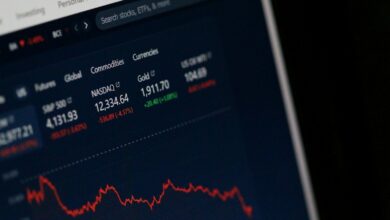Currency hedging – foreign exchange protection

Mitigating exposure to fluctuations in international money values is achievable through strategic risk reduction techniques. Employing derivatives such as forwards, options, and swaps enables entities to lock in rates and shield capital from unpredictable shifts in valuation.
Market instability often results in abrupt swings that can erode profit margins or inflate costs for cross-border transactions. Incorporating a disciplined approach to offsetting these vulnerabilities safeguards balance sheets against adverse movements triggered by geopolitical events or macroeconomic announcements.
Effective mitigation requires continuous monitoring of global monetary trends alongside tailored instruments aligned with specific operational needs. By integrating such mechanisms into financial management frameworks, organizations enhance resilience against volatility inherent in multi-currency engagements.
Currency Hedging: Foreign Exchange Protection [Wealth Management]
Implementing strategies to mitigate international purchasing power fluctuations is paramount for safeguarding portfolio value. Utilizing derivatives such as forwards and options enables investors to lock in rates, reducing vulnerability to adverse shifts in cross-border valuations.
Risk management across diverse markets requires precise calibration of exposure, especially amid heightened volatility seen in major global currencies. Investment allocations that overlook potential swings can erode returns, making proactive mitigation indispensable.
Mechanisms for Mitigating International Valuation Risks
Diverse financial instruments provide tailored solutions for managing translation and transaction risks arising from cross-jurisdictional investments. Forward contracts obligate counterparties to transact at predetermined prices on future dates, effectively stabilizing cash flow forecasts against unfavorable rate movements. Currency options confer asymmetric risk profiles by offering the right–but not the obligation–to exchange assets at specified levels, thus limiting downside while preserving upside potential.
Case studies from multinational corporations illustrate these techniques’ efficacy:
- A European manufacturing firm hedged anticipated USD receivables using forward contracts, securing profit margins despite a 5% dollar depreciation over six months.
- An Asian investment fund employed currency options to guard against rapid yen appreciation, successfully capping losses during sudden market corrections without sacrificing gains when the yen stabilized.
Volatility metrics such as implied volatility indexes enable quantitative assessments of exposure magnitude and inform hedging intensity decisions. Employing statistical models like Value-at-Risk (VaR) further refines risk quantification, aligning protective measures with acceptable thresholds of portfolio drawdown.
The advent of blockchain-based stablecoins introduces innovative avenues for international asset diversification with reduced conversion uncertainty. These digital tokens, often pegged to fiat benchmarks, facilitate seamless transfers and settlement across borders while mitigating traditional currency fluctuation risks. However, regulatory scrutiny and infrastructural maturity remain factors demanding vigilant oversight before large-scale adoption within wealth management frameworks.
Navigating international investment portfolios demands continuous evaluation of economic indicators influencing monetary policies and geopolitical developments affecting valuation dynamics. Sophisticated algorithms leveraging machine learning can process real-time data feeds–such as interest rate differentials and trade balances–to forecast potential stress points warranting recalibration of protective measures. Integrating these predictive analytics enhances resilience against unforeseen disturbances and optimizes capital preservation strategies within diversified asset classes.
Choosing Hedging Instruments
To mitigate exposure to fluctuations in monetary values, selecting appropriate financial tools is essential for managing transactional risk and safeguarding investments. Derivatives such as forwards and options offer customizable solutions tailored to offset potential losses arising from rate swings, while futures contracts provide standardized alternatives suitable for more liquid markets. Each instrument presents distinct cost structures and liquidity profiles that must align with the investor’s strategic horizon and tolerance for market variability.
Volatility in international valuations necessitates a nuanced approach when implementing safeguards against unfavorable shifts. Swap agreements, for example, can lock in predetermined price levels over extended periods, effectively stabilizing cash flows linked to cross-border asset holdings. In contrast, option contracts confer asymmetrical payoffs, enabling participants to benefit from favorable movements while limiting downside impact–albeit at the expense of upfront premium payments.
Technical Assessment of Available Tools
An analytical comparison reveals that forward contracts excel in simplicity and directness but lack flexibility if market conditions evolve unexpectedly. Conversely, currency options incorporate embedded time value and volatility components that complicate pricing models yet empower dynamic risk management strategies. Empirical data from recent market cycles indicate that portfolios employing a combination of swaps and options demonstrate enhanced resilience during episodes of pronounced instability.
Investment managers should also consider the operational implications of each choice. Futures require margin maintenance and daily settlement adjustments, potentially impacting liquidity management, whereas forwards are typically settled at maturity without interim cash flow effects. This distinction influences capital allocation decisions within diversified holdings exposed to multi-currency environments.
- Forwards: Customizable terms; counterparty credit risk present.
- Futures: Standardized contracts; exchange-traded; margin calls required.
- Options: Right without obligation; premium cost involved; asymmetric payoff.
- Swaps: Long-term agreements; fixed-for-floating exchanges; complex valuation.
A practical case study from a multinational corporation illustrates these principles: by combining long-dated swaps with short-term options on emerging market denominations, the firm achieved reduced earnings volatility despite severe devaluations recorded during a geopolitical crisis. Their layered approach balanced cost efficiency with sufficient protection against abrupt valuation drops across multiple jurisdictions.
The continuous evolution of global financial regulations also influences instrument selection by affecting transaction transparency and collateral requirements. Recent amendments under Basel III frameworks emphasize counterparty risk mitigation through central clearing mandates, thereby increasing operational costs for certain derivatives while enhancing systemic stability. Staying informed on such regulatory shifts enables better alignment between hedging tactics and compliance obligations within complex investment portfolios.
Timing Currency Hedging Trades
Optimal timing of hedging operations significantly enhances investment outcomes by mitigating the impact of volatility on cross-border capital flows. Data from international markets indicate that aligning trade execution with periods of relative stability in FX rates reduces transaction costs and improves risk-adjusted returns. For example, a study analyzing G10 currencies demonstrated that initiating derivatives contracts during low-implied volatility intervals led to a 15-20% reduction in hedging expenses compared to trades executed amid turbulent market phases.
Strategic deployment of protective instruments requires continuous monitoring of macroeconomic indicators such as interest rate differentials, geopolitical events, and central bank interventions. Investors managing portfolios exposed to multinational assets should consider employing algorithmic triggers based on real-time analytics to identify optimal entry points. A case in point is the 2023 US dollar appreciation cycle when early adoption of forward contracts before inflation data releases provided substantial shielding from adverse currency shifts.
Technical Indicators and Market Signals
Volatility indices (e.g., CBOE’s VXFX) serve as reliable gauges for determining favorable moments to secure positions against currency swings. Integrating these with momentum oscillators can refine timing strategies by signaling overbought or oversold conditions in international money markets. Empirical evidence suggests that combining implied volatility metrics with interest rate parity deviations enhances forecast accuracy for short-term forex fluctuations, thereby optimizing hedging trade execution.
Regulatory changes and financial innovations also influence timing decisions. The introduction of centralized clearing for OTC derivatives has reduced counterparty risks, encouraging earlier initiation of protection measures in certain jurisdictions. Additionally, blockchain-based settlement platforms offer near-instantaneous confirmation times, enabling investors to capitalize promptly on transient arbitrage opportunities across global liquidity pools. Maintaining awareness of these developments ensures calibrated responses aligned with evolving operational efficiencies.
Measuring Hedging Costs
To quantify the expenses associated with mitigating foreign exchange risk, investors must analyze the implied volatility embedded in forward contracts and options on international monetary instruments. The cost of safeguarding an investment against fluctuations in currency values is primarily influenced by the differential between domestic and overseas interest rates, known as the interest rate parity. This spread dictates the premium or discount applied to forward rates relative to spot prices, thereby defining explicit hedging charges.
Volatility levels of cross-border monetary pairs serve as a critical input when pricing derivative instruments used for risk reduction. Elevated instability in price movements raises option premiums, increasing the outlay required for strategic financial insurance. For example, during periods of geopolitical uncertainty impacting emerging markets, implied volatility spikes can lead to a two- or threefold increase in protective measures’ costs compared to stable economic intervals.
Key Drivers and Calculation Methods
Hedging expense evaluation integrates multiple components: bid-ask spreads on currency derivatives, overnight financing fees, and slippage arising from market liquidity constraints. A practical approach involves decomposing total costs into:
- Direct transaction fees: brokerage commissions and clearing charges;
- Opportunity costs: potential gains forgone due to locked-in rates;
- Implied volatility premiums: particularly relevant for options-based strategies.
This multidimensional framework allows portfolio managers to simulate varying scenarios using Monte Carlo methods or stochastic models to forecast probable cost distributions under different volatility regimes.
Case studies involving multinational corporations illustrate that adopting rolling hedge strategies can optimize expenditure by balancing fixed-cost forwards with more flexible option contracts. For instance, a European firm hedging US dollar receivables over a year may find layered maturities reduce cumulative fees while maintaining effective shield coverage amid fluctuating global policy announcements.
The assessment process benefits from real-time integration of macroeconomic indicators such as central bank rate adjustments and trade balance reports that influence currency pair dynamics. Incorporating machine learning algorithms trained on historical price behavior enhances predictive accuracy for expected hedging expenses, allowing investors to adjust protection levels proactively without incurring unnecessary premiums.
An additional dimension includes regulatory impacts on cross-jurisdictional capital flows which can alter liquidity profiles and thus affect bid-offer spreads on derivative contracts. Continuous monitoring of such legal frameworks alongside market microstructure developments ensures refined cost measurement aligned with evolving international financial environments.
Managing Hedge Accounting Risks: Strategic Insights and Future Directions
To mitigate risk effectively in international capital allocation, firms must integrate sophisticated hedging mechanisms that align with evolving volatility patterns of cross-border monetary units. Precision in applying derivative instruments–such as forwards, options, or swaps–is critical not only for safeguarding asset values but also for maintaining compliance under shifting regulatory accounting frameworks.
Investment portfolios exposed to fluctuating valuation drivers require continuous recalibration of risk parameters. For instance, a multinational entity utilizing cross-currency swaps should monitor basis differentials closely, as these can introduce residual risks impacting reported earnings and balance sheet integrity. Leveraging algorithmic models that incorporate macroeconomic indicators alongside blockchain-based immutable records can enhance transparency and predictive accuracy.
Key Technical Takeaways and Strategic Outlook
- Volatility Management: Employ real-time analytics integrating spot rate movements and implied volatilities to dynamically adjust hedge ratios, minimizing ineffective coverage and reducing profit-and-loss swings.
- Accounting Alignment: Synchronize hedge documentation with international financial reporting standards (IFRS 9 or ASC 815), ensuring designation criteria are strictly met to avoid de-recognition or forced adjustments that distort investment returns.
- Regulatory Adaptation: Anticipate tightening disclosure requirements related to derivative exposures; automated audit trails using distributed ledger technologies can streamline compliance verification processes.
- Diversification of Instruments: Beyond traditional contracts, consider emerging decentralized finance (DeFi) protocols offering synthetic derivatives for tailored exposure management, albeit with heightened counterparty considerations.
The trajectory of global capital flows necessitates an integrated approach combining quantitative risk modeling with innovative financial engineering. As macroeconomic uncertainties persist–driven by geopolitical tensions and monetary policy shifts–the precision of hedging strategies will define competitive advantage in preserving investment value. Forward-looking entities are advised to embed adaptive frameworks that incorporate artificial intelligence-driven scenario analysis alongside blockchain-enabled data integrity to preempt unforeseen valuation gaps.
This convergence of advanced analytics and technological innovation promises enhanced resilience against currency-related disruptions. Consequently, portfolio managers must continually reassess their exposure matrices, leveraging both conventional financial instruments and novel decentralized solutions to optimize protection efficacy while navigating complex international markets.






